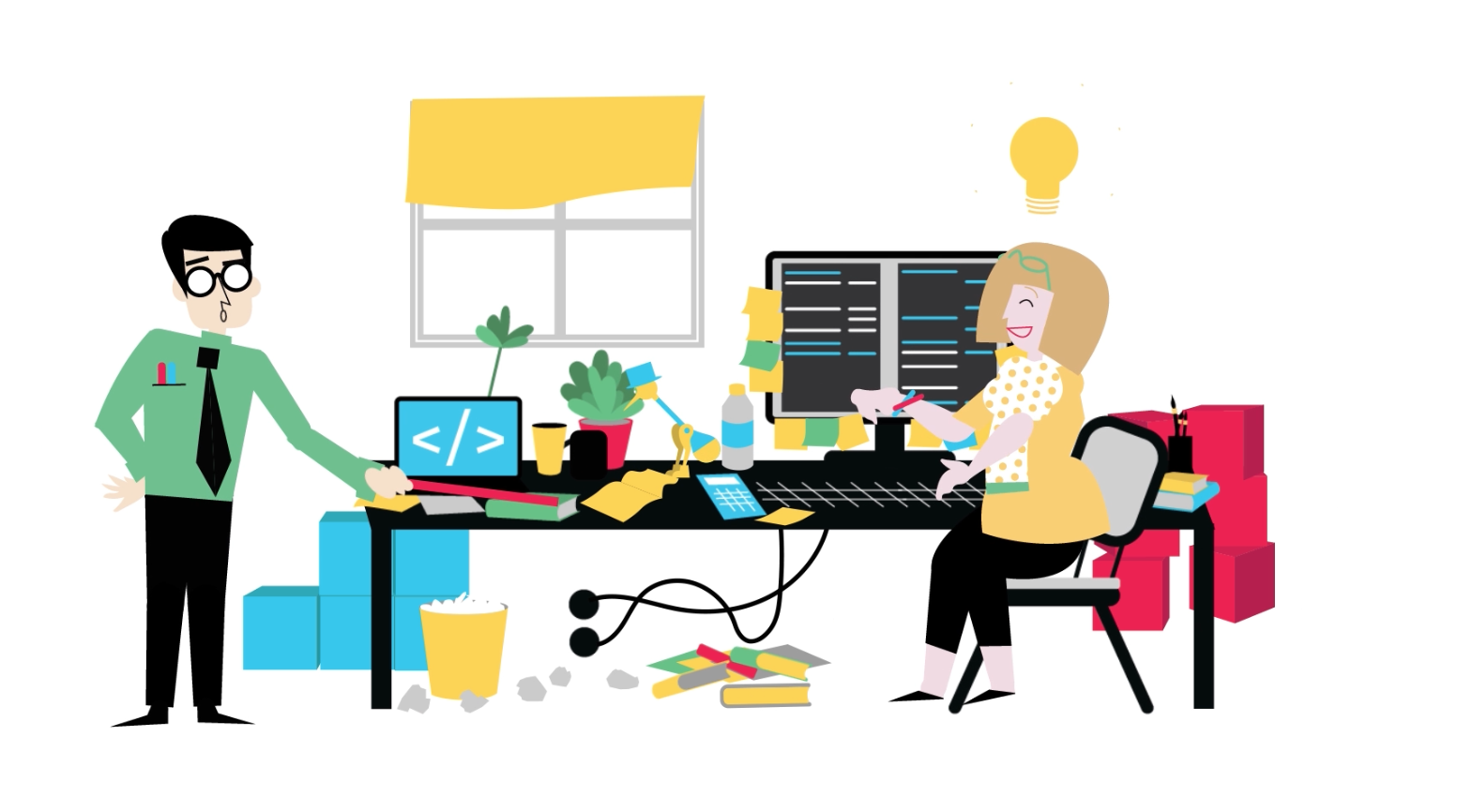The other day, a friend shared with me this nightly after-dinner routine at her house: She and her husband clear the table. She loads the dishwasher. She leaves the kitchen. He stays behind and rearranges all the dishes in the dishwasher.
“He always complains about how I load it,” she told me. “He says I don’t use the space efficiently enough. So we just have to run it more often! I’d rather do that than spend all day trying to organize every dish in there just so.”
I’m not going to weigh in on who’s loading the dishwasher correctly, but I do get where he’s coming from. There’s nothing more annoying than watching someone tackle a task when you know there’s a better way. No matter what you say or do, they won’t listen to reason, even though your way is the more precise way. Or the more efficient way...or thoughtful...or creative...
You know, the right way.
Sometimes, it feels like we spend a lot of energy trying to make sense of each other and the world around us. Whether we’re navigating the dishwasher protocols of our significant others, delegating a task to a direct report at work, or trying to find our way to the solution to a nagging business challenge, one thing is clear: Other people don’t always do things the way we would do them. And that can be pretty irritating.
The question is, why do people approach tasks, problems, decisions, ideas, and, yes, even the dishwasher, in completely different ways? Why do we all take different routes to the same destination?
It all comes down to an internal GPS that’s guiding each of us in certain directions. Your default setting may be to take the shortest route, while someone else is focused on avoiding the highways. These differences can be annoying, but they can also open up new directions you might never have even considered. And once those options are available to you, you can be more agile in the face of roadblocks. You might even change your mind about what’s the “right” way and what isn’t.
Before you can understand why other people are doing things the way they’re doing them, you need to understand your own GPS and what powers it. So let’s talk about you.
How to Activate Your Agile Thinking GPS
Your internal GPS is incredibly powerful because it’s fueled by the most important resource you have: your brain. At its most elemental, your thinking is what guides how you do what you do—whether your first instinct is to organize your desk and bulletpoint out your step-by-step plan for tackling the project, or to play around with different ideas before diving in wherever your imagination takes you. Whether you zero in on the facts and the data to make your case, or whether you listen and share stories about how it’s going to make people feel.
The “default” setting of your thinking GPS represents your preferences—your go-to thinking. And most of us will be quite happy running along in this default mode unless something throws us off course, slows us down or keeps us from getting where we need to go. That might stop you in your tracks, but it doesn’t have to, because it’s not your only setting. You have the ability to use this entire system—in other words, your whole brain—and nimbly navigate around the roadblocks.
Try this: The next time you’re feeling stuck, take a minute out to think about your thinking. What’s your typical approach? Is it (A) logical and rational? (B) Detailed and organized? (C) Personalized and expressive? (D) Imaginative and conceptual? It most likely leans heavily towards one or two of these, possibly three. You could even be one of the few who’s evenly balanced across all four. The point is, none are right. And none are wrong. It all depends on the circumstances and what you’re trying to accomplish.
Once you understand that you have all these thinking paths available to you, you can turn off autopilot and choose the route that’s best for each situation. This is what agile thinking is all about. It’s about understanding and then adjusting your thinking based on the conditions. And because the brain is inherently flexible, this ability to be an agile thinker is completely within your reach. You just have to know about it and then use it to your advantage.
Agile Thinking and the Power of Difference
Sign up to our newsletter for the latest insights
You can also do yourself a favor and make the decision to change your perspective on difference. Differences can be challenging to deal with, but they also bring a lot of value. Part of being an agile thinker and leader is being able to tap into the default settings of others to help cover your blindspots. One GPS is powerful on its own, but add another (and another and another), and the thinking power increases exponentially. And whether your title says “leader” or not, this kind of leadership agility is something we all need to continually develop, since we encounter different approaches (and roadblocks) every day.
So don’t get too frustrated the next time someone isn’t doing it the way you would have done it. Instead, follow these three guideposts to keep you on track:
- Understand your default thinking and use it to your advantage, but also practice using your whole brain to build your personal thinking agility.
- Identify and value different thinking. Be a detective and activate your thinking GPS when working with others. They can help compensate for your blindspots.
- Develop new skills and comfort for when and how to stretch. Remember, thinking flexibility is inherent, so you already have the ability to use your whole brain. The more you stretch and apply new skills and thinking, the more comfortable and natural they’ll become.













